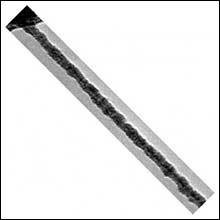Life Sciences and Chemistry
Articles and reports from the Life Sciences and chemistry area deal with applied and basic research into modern biology, chemistry and human medicine.
Valuable information can be found on a range of life sciences fields including bacteriology, biochemistry, bionics, bioinformatics, biophysics, biotechnology, genetics, geobotany, human biology, marine biology, microbiology, molecular biology, cellular biology, zoology, bioinorganic chemistry, microchemistry and environmental chemistry.

Setting the evolutionary record straight
Writing in this week’s issue of Nature, Professor Paul Pearson relates how he discovered an account of the theory – regarded as one of the most important in the history of science – in a rare 1794 publication by geologist, James Hutton. Darwin’s Origin of Species was published in 1859. Professor Pearson tracked down a copy, which runs to three volumes and more than 2000 pages, in the National Library of Scotland. Couched in the middle of the second volume is a whole chapter on the selection

Hand-to-ear link in brain established after minutes of piano learning
Contrary to what your music teacher told you, it does not take decades of piano practice to learn to play phrases on the piano without looking at your fingers. A brain map linking finger movements with particular notes begins to form within minutes of starting training, according to research published this week in BMC Neuroscience. Recent brain imaging studies of professional musicians have demonstrated that silent tapping of musical phrases can stimulate auditory areas of the cortex and hea

Restricting the gene pool
Nature has evolved clever ways to prevent animals from different species from successfully reproducing. As published in the upcoming issue of Genes & Development, molecular biologists at UC Irvine are gaining a better understanding as to how.
In the October 15th issue, Drs. Noriko Kamei and Charles Glabe report on the identification of a receptor on the surface of sea urchin eggs that regulates the species-specific adhesion of sperm.
External fertilization can be risky business, e

microRNA Targets: How Big Is The Iceberg?
In line with the dogma of molecular biology “DNA makes RNA makes protein”, RNA molecules have largely been thought of as intermediaries between the information encoded in the genome and the proteins that do the work. More recently, however, it has become clear that RNAs play far more active roles in most if not all plant and animal species.
We know that small RNAs that do not encode proteins themselves can regulate messenger RNA molecules that do. They bind to their specific targets, which

Researchers discover genes that distinguish human, nonhuman primate brains
Findings shed light on the evolution of human cognition, the capacity for long lifespan and the potential for neurodegenerative disease
A research team from the Salk Institute, the Yerkes National Primate Research Center of Emory University and the University of California – Los Angeles (UCLA), has identified genes in the cerebral cortex that differ in levels of activity between humans and nonhuman primates, including chimpanzees and rhesus monkeys. These findings, which appear in the

For quantum confinement, size matters, but so does shape
Size matters, but so does shape, at least in the world of semiconducting nanocrystals, report chemists at Washington University in St. Louis.
Their findings, published in the August 2003 issue of Nature Materials, demonstrate experimentally that the shape of a semiconductor nanocrystal can affect its electronic and optical properties. The study, led by graduate student Heng Yu and William E. Buhro, Ph. D., professor of chemistry in Arts & Science, is the first comprehensive compariso